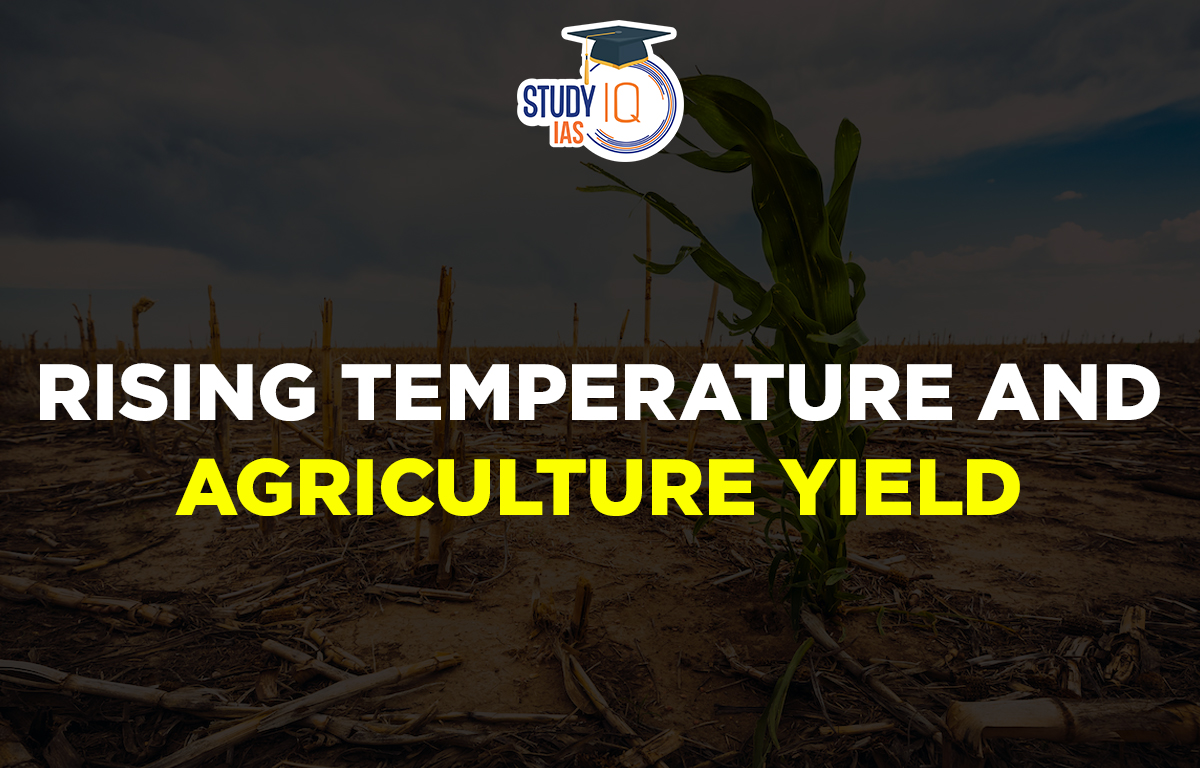Table of Contents
Context: India has reported the warmest February this year since 1877 with average maximum temperatures touching 29.54 degrees Celsius.
Reason for Warm February
- Lack of Rainfall: There was a 68% deficiency in rainfall in February over the country with 75% deficiency over northwest India.
- Weak western disturbances have resulted in little to no rainfall in December and January this year.
- Development of an anticyclone over Arabian Sea led to record heat over the country
- An anticyclone is a high pressure area that results in warmer and drier weather.
IMD Forecast
- According to India Meteorological Department (IMD), most parts of the country are expected to experience above-normal temperatures while the southern peninsula and parts of Maharashtra are likely to escape the brunt of harsh weather conditions.
- Monsoon Prediction: Below-normal rainfall was expected over most areas of northwest India, west-central India and some parts of east and northeast India.
- Normal to above-normal rainfall is likely over most parts of peninsular India, east-central India and some isolated pockets of northeast India.
- It is the second consecutive year that the heat has set in early, which is likely to impact the wheat grain size and cumulative yield.

Impact of Heatwave on Agriculture
- Key wheat growing states like Madhya Pradesh will experience above normal temperatures that will adversely affect the wheat crop.
- Higher day temperature lead to adverse effect on wheat as wheat crop is approaching reproductive growth period, which is sensitive to temperature.
- High temperature during flowering and maturing period leads to loss in yield. There could be similar impact on other crops and horticulture
- Last year’s heatwave shrivelled the wheat grains resulting in poor output.
- High Temperature also kills crop-friendly microbes in the soil which are vital for the optimum growth of the crops.
- Indian Council of Agricultural Research — Indian Institute of Wheat and Barley Research (ICAR-IIWBR) has issued an advisory, asking farmers to inspect their crops for yellow rust disease, which is a result of high temperatures.
- Yellow rust is a fungal disease that attacks wheat plants and can lead to a significant reduction in crop yield and quality.
Impact of Low Crop Yield
- Food Security: As temperatures rise, the yields of food and cash crops in South Asia are expected to decline, putting pressure on food security in the region.
- Scientists and researchers project that a 2.5 to 4.9 degrees Celsius increase in temperature could lead to a decrease of 41%-52% in the wheat yield, and 32%-40% in rice.
- Declining nutrition: An increase in carbon dioxide (CO2) in the atmosphere will have an adverse effect on nutrition, since elevated CO2 levels interfere with processes that are important for the synthesis of protein in plants.
- A decline in the nutritional quality of grains could exacerbate “hidden hunger”, a form of undernutrition where a person’s energy intake may be high enough, but intake of nutrients like iron and zinc is so low that it affects their health and development negatively.
- Economy: Inflation in cereals has been particularly worrying over the last couple of months.
- Consumer Price Index reached 6.52% in January, beyond the Reserve Bank of India’s upper limit of tolerance (consecutively for two months).
- The Food Corporation of India (FCI) has already ended up selling 1.8 million tonnes of wheat in the open market. A warm February could fuel this inflation further.
- Water Availability: Climate change also affects the availability of water through a decrease in seasonal rainfall and an increase in extreme rainfall events.
Way Forward
- Close cooperation between agricultural research centres and farmers is necessary to adapt to the changing climate.
- Scientists are advising farmers to readjust their agrarian calendars to cope up with an adversely changing climate.
- Access to information will equip the farmer with necessary tools to fight low productivity, or even the effects of rising temperatures
- Investment in climate-resilient agriculture in India
- International Crops Research Institute for the Semi-Arid Tropics (ICRISAT) is in the process of producing chickpeas that are more nutritious and resistant to climate change.
- Indian Council of Agricultural Research [ICAR] has come up with a new wheat variety — HD-3385 — which is more heat-tolerant.
About India Meteorological Department (IMD)
- It was established in 1875.
- It is an agency of the Ministry of Earth Sciences of the Government of India.
- It is the principal agency responsible for meteorological observations, weather forecasting and seismology.


 Niveshak Didi Initiative Phase 2 launche...
Niveshak Didi Initiative Phase 2 launche...
 Central Pollution Control Board (CPCB) R...
Central Pollution Control Board (CPCB) R...
 Foreign Contribution Regulation Act (FCR...
Foreign Contribution Regulation Act (FCR...





















